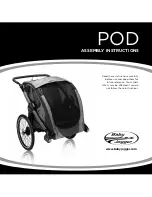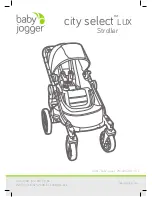
nine different switch type MIDI control messages. The MERGE input provides a useful way of combining
information from a keyboard or MIDI sequencer with MIDI data created by the front-panel controls.
What Are Drawbars?
This section will describe the use of drawbars in an organ context, for example, using the MIDI Drawbar with the
V3 Tone Wheel Organ Synthesizer. The MIDI Drawbar need not be used for organ applications; its drawbars can
be
used for many application such as the volume faders of a MIDI mixer, or reverb time of an effects processor.
Tone-wheel organs use drawbars in a way which is analogous to the faders of a graphic equalizer. While a graphic
equalizer modifies the timbre of a sound, drawbar synthesis creates timbres. This is actually a form of additive
synthesis. Harmonic levels are increased by pulling drawbars out and decreased by pushing them in. As with a
graphic equalizer, drawbars are also arranged with ascending frequencies from left to right. The 2nd drawbar from
the left is an exception to this arrangement rule (see the Historical Organ Information section).
For example, if the leftmost drawbar is the only drawbar pulled out, the sound produced will be a low-frequency
sine wave. A sine wave has no harmonic overtones. This makes sense; there is no other drawbar pulled out.
Historical Organ Information
Organ registration conventions have developed over many centuries. Referring to the drawbar diagram on page 2,
you will notice pipe footages associated with the drawbars. This notation is a throw-back to the days of pipe organs.
Pipe organs produce sound by introducing noise (turbulent air) into tuned resonators (pipes). An organ flute pipe
sounds like a flute and is the most pure sounding (free of harmonics) type of organ pipe. This is the type of sound
produced by playing a note on a tone-wheel organ with a single drawbar pulled out.
A flute pipe's frequency is roughly dependent on its length. The longer the pipe, the lower its frequency. Notice that
the footages decrease for drawbars going from left to right. This agrees with the graphic equalizer analogy: The
frequencies get higher going from left to right. If the pipe footages for the drawbars are divided into the first drawbar
footage (16'), the relationship between the drawbar's harmonic frequencies can be seen. This relationship is shown in
the diagram on page 2 below the footages.
Notice that the white drawbars have harmonic frequency relationships which are powers of two (2, 4, 8, and 16).
This type of harmonic relationship is one in which the tones are related by octaves. The octave relationship is
considered to be a "pure" relationship and that is why the white color is used to denote these drawbars. Drawbar
harmonics which are not an octave apart from the white drawbars are indicated by their black-colored handles.
Many people wonder why the first drawbar (16') is not white and why the second drawbar appears to violate the low
to high harmonic arrangement. Traditionally the 8' stop (drawbar) is thought of as the fundamental tone, therefore all
harmonic frequencies below the fundamental tone or less than an octave above the fundamental are known as sub-
harmonics. These subharmonic drawbars are designated by a brown-colored handle.
Using The MIDI Drawbar With The V3



























